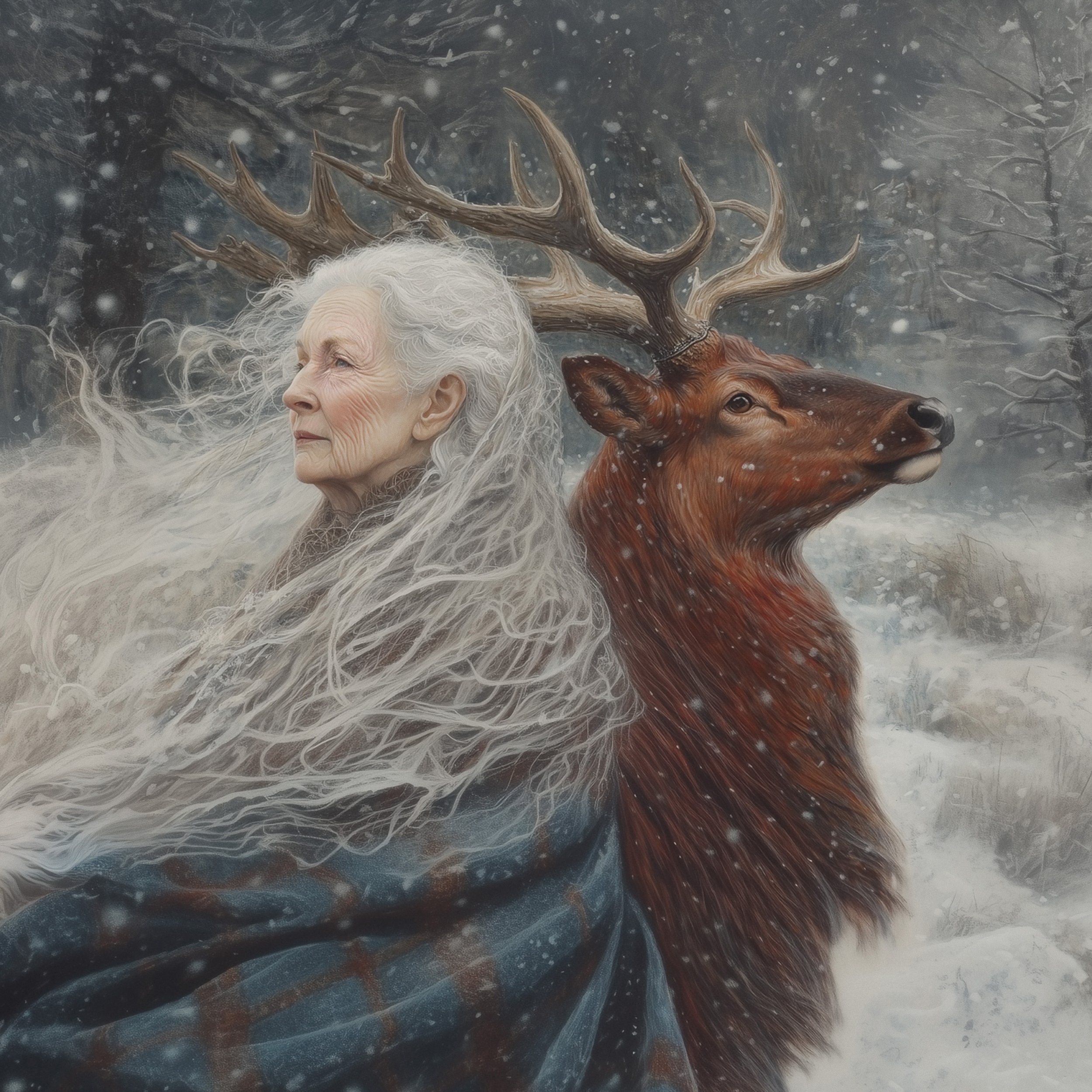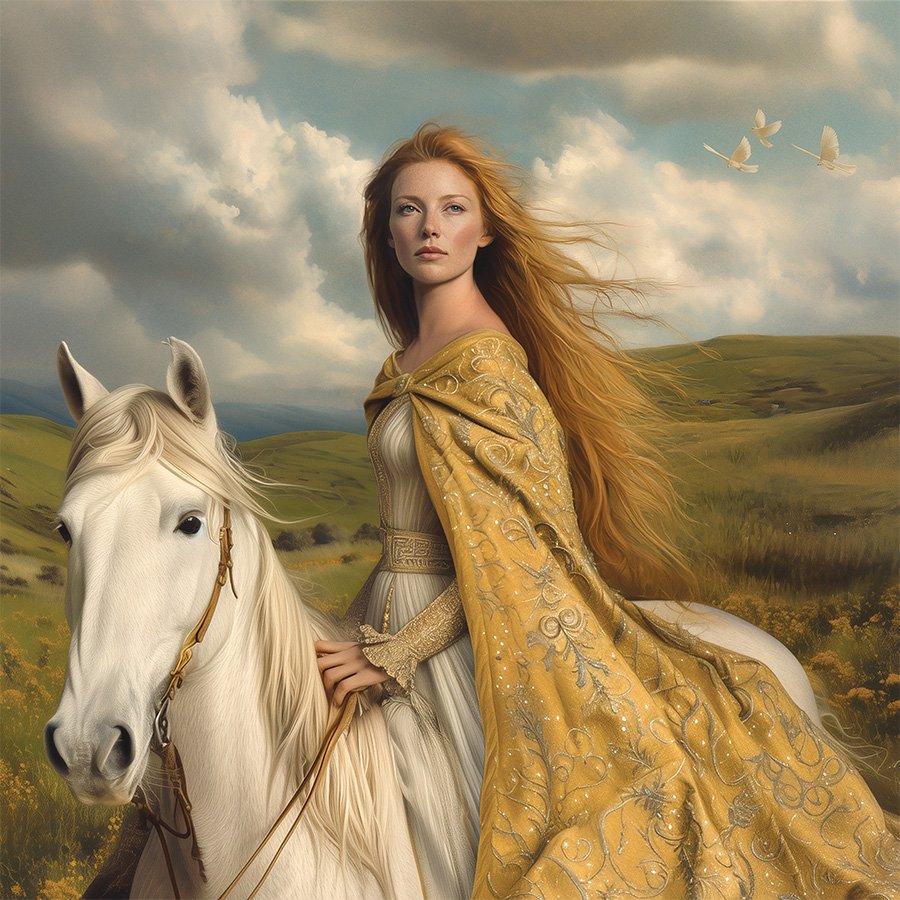Ostara
Imbolc, celebrated around February 1-2, marks a pivotal point in the Wheel of the Year, symbolizing renewal, purification, and the returning light as winter wanes. Rooted in Celtic traditions, this festival honors the goddess Brigid, associated with fire, inspiration, and fertility. Imbolc celebrates the first stirrings of spring, encouraging spiritual renewal through rituals like candle lighting and crafting Brigid's Crosses. As we embrace the growing warmth and light, Imbolc invites us to cleanse and prepare for the new life that spring promises, reflecting the enduring cycle of nature.
Imbolc
Imbolc, celebrated around February 1-2, marks a pivotal point in the Wheel of the Year, symbolizing renewal, purification, and the returning light as winter wanes. Rooted in Celtic traditions, this festival honors the goddess Brigid, associated with fire, inspiration, and fertility. Imbolc celebrates the first stirrings of spring, encouraging spiritual renewal through rituals like candle lighting and crafting Brigid's Crosses. As we embrace the growing warmth and light, Imbolc invites us to cleanse and prepare for the new life that spring promises, reflecting the enduring cycle of nature.
The Cailleach
Brigid, a central figure in Celtic mythology, is revered as the goddess of fertility, healing, poetry, and smithcraft. Originating from ancient Ireland, she was celebrated as a bringer of spring and a symbol of renewal, her presence marked by the sacred flame tended in her temple at Kildare. Brigid's influence extended beyond her associations with fertility and healing to her role as a patron of the arts and crafts, inspiring both poets and metalworkers. Despite the rise of Christianity, Brigid's worship endures, with her festival Imbolc, celebrated on February 1st, reflecting themes of growth and new beginnings, and her legacy continues to inspire modern practitioners of Celtic spirituality.
The Winter Solstice
Yule, rooted in ancient Germanic and Norse traditions, marks the winter solstice around December 21st, celebrating the longest night and the return of light. The festival involves symbolic customs such as the Yule log, which represents continuity and rebirth, and is honored through feasting, wassailing, and gift-giving. Evergreen trees, a Yule tradition, evolved into the modern Christmas tree, and the Yule log’s symbolism continues in the Yule log cake and festive decorations. Today, Yule remains a period of spiritual reflection and celebration, emphasizing the triumph of light over darkness.
Rhiannon
Brigid, a central figure in Celtic mythology, is revered as the goddess of fertility, healing, poetry, and smithcraft. Originating from ancient Ireland, she was celebrated as a bringer of spring and a symbol of renewal, her presence marked by the sacred flame tended in her temple at Kildare. Brigid's influence extended beyond her associations with fertility and healing to her role as a patron of the arts and crafts, inspiring both poets and metalworkers. Despite the rise of Christianity, Brigid's worship endures, with her festival Imbolc, celebrated on February 1st, reflecting themes of growth and new beginnings, and her legacy continues to inspire modern practitioners of Celtic spirituality.
Yule and the Winter Solstice
Yule, rooted in ancient Germanic and Norse traditions, marks the winter solstice around December 21st, celebrating the longest night and the return of light. The festival involves symbolic customs such as the Yule log, which represents continuity and rebirth, and is honored through feasting, wassailing, and gift-giving. Evergreen trees, a Yule tradition, evolved into the modern Christmas tree, and the Yule log’s symbolism continues in the Yule log cake and festive decorations. Today, Yule remains a period of spiritual reflection and celebration, emphasizing the triumph of light over darkness.
Cerridwen
Continuing Spooky Season with more Dark Goddesses, this time we're delving into Celtic mythology with Cerridwen. A powerful sorceress and symbol of transformation, Cerridwen is renowned for her cauldron of wisdom, which she intended to bestow upon her son but instead became a vessel of profound alchemical change. Deeply connected to the moon, she represents cycles of renewal and the mysteries of existence. In modern Pagan and Wiccan traditions, Cerridwen's cauldron and lunar affiliation underscore her role as a guide to personal growth and mystical insight.
the Morrigan
Celtic mythology reveals a profound depth through the figure of the Morrigan, the Great Queen or Phantom Queen. As a tripartite deity, she embodies three distinct aspects—Badb, Macha, and Nemain—each representing war, sovereignty, and chaos respectively. Known for her shape-shifting into a crow or raven and her ability to foretell death and battle outcomes, the Morrigan was central to Celtic beliefs about war and sovereignty. Today, she remains a symbol of strength and transformation, celebrated in modern Celtic and Pagan practices for her enduring power and influence.
Lugh
Lugh, a central figure in Celtic mythology, is known for his diverse skills and attributes. As a member of the Tuatha Dé Danann and the grandson of the Fomorian leader Balor, Lugh's birth was prophesied to bring prosperity and overthrow his grandfather. His mastery across various disciplines—warfare, poetry, music, and druidic arts—earned him the title Samildánach, or Master of All Arts. Celebrated during Lughnasadh, his harvest festival in August, Lugh's legacy continues to inspire modern earth-centered spiritual practices, embodying light, knowledge, and creativity.
Lughnasadh
Lughnasadh, also known as Lammas, is celebrated on August 1st or the first harvest Full Moon, marking the start of the harvest season. Named after the Irish god Lugh, it honors his foster mother Tailtiu, who sacrificed herself to prepare the fields for cultivation. This ancient Celtic festival highlights the connection between agricultural cycles and communal celebrations, featuring feasts, games, and gatherings. In modern practices, Lughnasadh is a time for gratitude, reflection, and reconnecting with nature, while its influence also extends to Christian traditions as Lammas, celebrating the first wheat harvest and the offering of bread.
Ostara/Eostre
Ostara, also known as Eostre, was a pivotal figure in ancient Germanic spirituality, representing the arrival of spring and the rebirth of life after winter. Her name, derived from "ostarun," meaning "eastern direction," reflects her association with the dawn and the renewal of light. Symbolized by hares and eggs, Ostara embodied fertility and the promise of new beginnings. Her ancient festival, celebrating the spring equinox, laid the groundwork for modern Easter traditions, illustrating her enduring influence on seasonal celebrations.
Olwen
In Welsh mythology, Olwen is a goddess of beauty, purity, and renewal, her very presence said to cause flowers to bloom in her footsteps. Her name, meaning "white track" or "white footprint," reflects her connection to spring and the natural world's rejuvenation. The tale of her courtship by Culhwch, who must complete formidable tasks to win her hand, underscores her association with the cycles of life and the challenges that lead to growth. Olwen remains a symbol of nature's vitality and the importance of honoring the earth's beauty and abundance.













